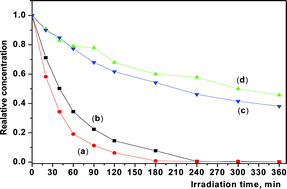Photoelectrocatalytic treatment of pentachlorophenol in aqueous solution using a rutilenanotube-like TiO2/Ti electrode
Abstract
Taking

* Corresponding authors
a
State Key Laboratory of Pollution Control and Resource Reuse, School of the Environment, Nanjing University, Nanjing, P.R. China
E-mail:
yangdlut@126.com
Tel: +86-025-83593239
b School of Environmental and Biological Science and Technology, Dalian University of Technology, Dalian, P.R. China
Taking

 Please wait while we load your content...
Something went wrong. Try again?
Please wait while we load your content...
Something went wrong. Try again?
S. Yang, X. Quan, X. Li and C. Sun, Photochem. Photobiol. Sci., 2006, 5, 808 DOI: 10.1039/B604077B
To request permission to reproduce material from this article, please go to the Copyright Clearance Center request page.
If you are an author contributing to an RSC publication, you do not need to request permission provided correct acknowledgement is given.
If you are the author of this article, you do not need to request permission to reproduce figures and diagrams provided correct acknowledgement is given. If you want to reproduce the whole article in a third-party publication (excluding your thesis/dissertation for which permission is not required) please go to the Copyright Clearance Center request page.
Read more about how to correctly acknowledge RSC content.
 Fetching data from CrossRef.
Fetching data from CrossRef.
This may take some time to load.
Loading related content
